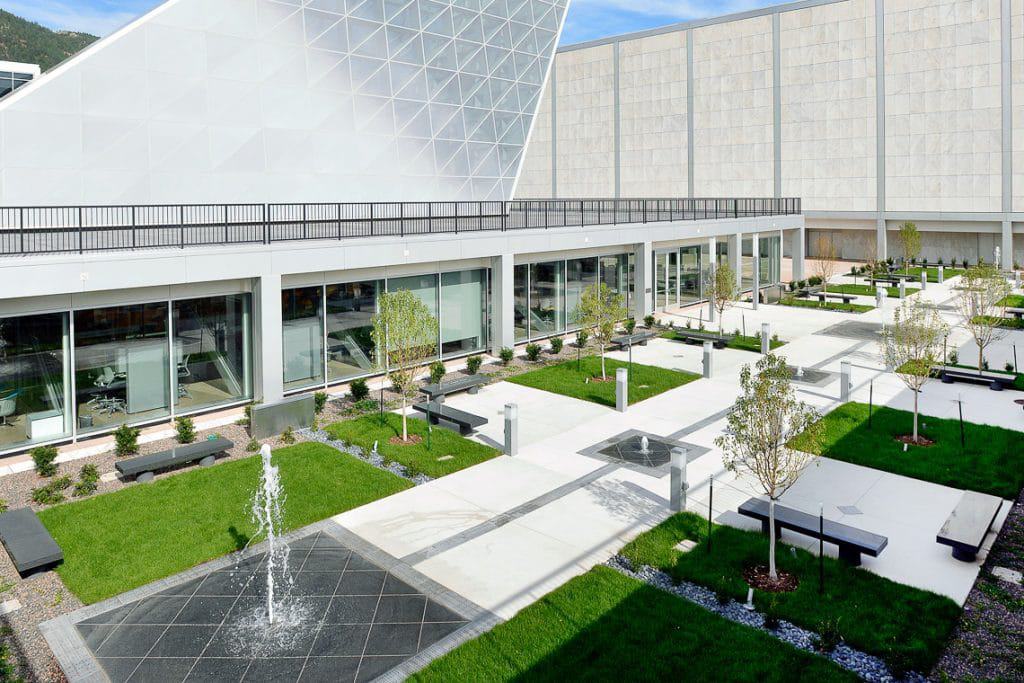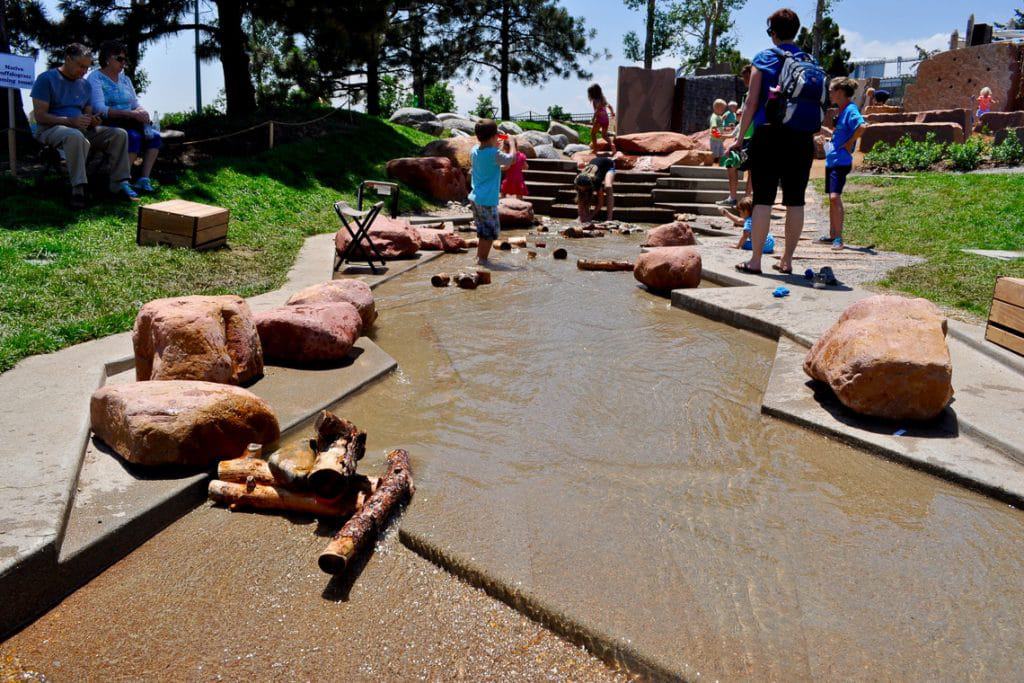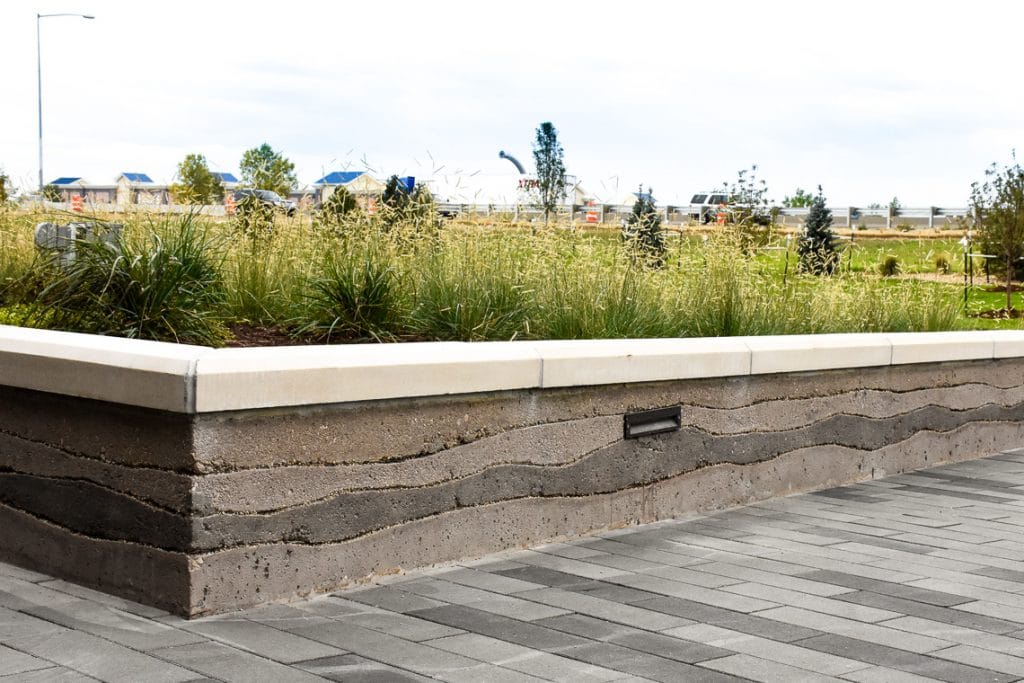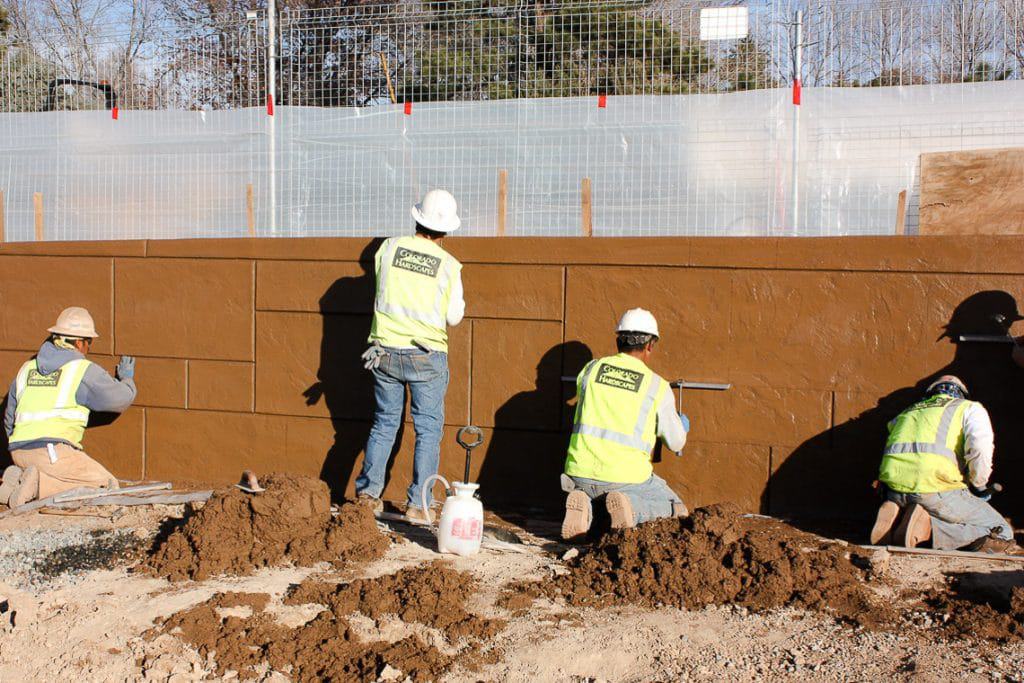When you picture concrete, you probably think of dull, gray surfaces — designs that are durable but not exactly imaginative. And while that might be true of some concrete structures, the material also offers tons of potential for art, design, and decorative concrete. With the right finishes and patterns, concrete can add interest and inspiration to otherwise drab spaces.
Here, we’ve outlined some key differences between decorative or architectural concrete and plain gray utilitarian concrete. As well as some examples of how concrete can be used to take creative design projects to the next level.
The Difference Between Decorative and Utilitarian Concrete
Any concrete that serves to enhance the structure aesthetically can be described as decorative concrete. Individuals usually use this kind of concrete exclusively for decoration as it isn’t necessary to the structural integrity of the building.
Utilitarian concrete, on the other hand, is what you usually see in warehouses and parking garages. It’s all about functionality, with little thought given to design or aesthetics. It can include curb and gutter, foundations, or even building pillars.
But despite these general distinctions, decorative concrete can fill a utilitarian role too. Architectural concrete brings together the best qualities of both decorative and utilitarian concrete. Not only does architectural concrete embody artistic designs, but it also serves a functional purpose.
What Types of Decorative and Architectural Concrete Are There?
Regardless of its intended use, both decorative and architectural concrete comes in many forms; often featured prominently in driveways, parking lots, or sidewalks. However, it can also be used to form retaining walls, stairways, pool decks, and so much more.
Because of its versatility and aesthetic diversity, it’s an appealing option for public art masterpieces and even playgrounds. You might have seen a few of our own wide-ranging examples in Denver. The wall veneer at the Otra Vez Cantina, pictured below, and sculptures at Confluence Park are just two examples.

Depending on the scope of the project and your personal aesthetic preferences, concrete can take on a variety of shapes, textures, and colors.
A few common types of decorative or architectural concrete include:
- Sand finish (Sandscape): Elevates traditional methods of textured concrete by exposing the sands in the mix without going deeper into the aggregates.
- Color-hardened concrete (Color Hardener): A method of adding color to the top layer of concrete. Applied onto wet concrete, it offers a variety of color options not achievable within a concrete mix itself.
- Stamped concrete (Bomanite Imprinted Concrete): Designed to reflect the look of brick, cobblestone, wood, or other patterns. It has become extremely popular in residential projects over the last decade.
- Thin Concrete Overlays (Microtop): Used in both exterior or interior, and horizontal or vertical applications. They can renew the life of old concrete, and can easily change the color or texture.
- Cementious Terazzo (Modena): Interior overlay that is the thickness of tile and can be laid in a seamless installation process. Giving the added value by adding aggregates, metal designs or other objects into the floors.
- Dyed or Stained concrete: Crafted to add color even after curing is complete to create unique designs and vivid colors.
And these options are just the beginning. When it comes to designing a space with concrete, the only real limit is the designer’s imagination.
How to Improve Projects with Architectural Concrete
It’s important to plan carefully when you’re working with concrete: most projects require a balance between appearance and purpose. But that doesn’t mean you have to sacrifice one for the other as seen in the park benches below.

At Colorado Hardscapes, we believe you should never have to compromise artistry for functionality — or vice versa. From decorative concrete enhancements to integrated architectural concrete designs, we can help you make the most of your next concrete project.
With Colorado Hardscapes in your corner, you can make any concrete surface or structure pop. Stop by our design center to explore your options for an unforgettable concrete design.
